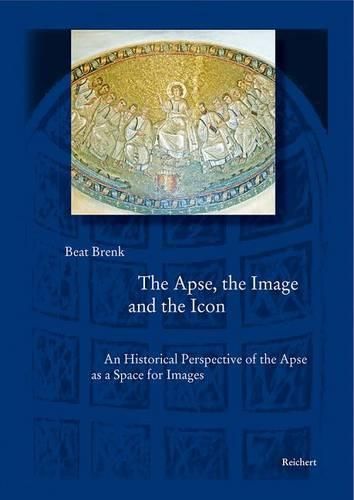The Apse, the Image and the Icon: An Historical Perspective of the Apse as a Space for Images
Beat Brenk

The Apse, the Image and the Icon: An Historical Perspective of the Apse as a Space for Images
Beat Brenk
This book deals with the apse as a showcase for images in the early Christian and early Byzantine periods. Two opposed traditions, harking back to early imperial times, nourished the invention of the Christian apse image: on the one hand there were statues in apses of pagan temples and imperial cult rooms which were venerated during cult ceremonies, on the other hand, there were apse mosaics in nymphaea where aquatic myths and figures celebrated the amenities of water. Christian apse mosaics originated within this context and in spite of the Old Testament prohibition of the image. The functions and effects of apse mosaics in Christian cult rooms were explored step by step and invented afresh. The participants of this delicate process of Christian image inventions were not only ecclesiastical but also private patrons. Without any qualm, emperors and representatives of the ruling class decorated their mausolea (S. Costanza in Rome, S. Aquilino in Milan) and representational rooms in villas (Centcelles) with Christian images. Because of the Mosaic prohibition of images, the Church could not attribute to the image a biblically grounded role, it behaved cautiously towards the decoration of churches with images during the fourth century. Only during the fifth century did it relax, and start to invent high brow theological programs (S. Maria Maggiore in Rome), understandable only to few believers. Some bishops gave special treatment to the promotion of aniconic programs (Paulinus of Nola, baptistery of the Lateran in Rome, Casaranello, church of Paraskevi in Salonica). Others rejected images in churches categorically (Epiphanius of Salamis). The Church admitted images and programs representing and portrayed Jesus Christ as God and as a human being that private patrons and artists had invented together with theologians; it provoked thereby a conflict (never really argued out) between the pagan representation of gods and emperors and the representation of Christ whose image should never recall images of gods nor of emperors, though points of contact were unavoidable. Highly original creations of apse mosaics resulted from this fertile conflict that were never repeated. All early Christian apse mosaics are unprecedented, one of creations without any succession. Their treatment as iconographic types is a blind ally. The Church sat back and watched how mosaics and frescoes in apses of cult rooms generated very particular effects, evoking in the viewer respect, admiration, awe and maybe even veneration. The representation of the Virgin with the child in a large apse evoked something like visual worship. The capacity of the image to have an impact on the viewer could not be decreed by the Church, but this was an affair manifested more or less casually according to the inventive power of the artist. For several centuries, the Church was not in a situation to create an official image of Christ. It cared for having apse mosaics not being adored. But the Church could not prevent images from being adored by private persons and/or control private concerns, such as setting-up of ex votos, in official church apses (S. Venanzio in Rome). Private persons first launched the cult of the Virgin (sarcophagus of Adelphia, gold glass). From the sixth century on, images - apse-mosaics, frescoes and panel paintings - were installed for ‘cult-propaganda’ (SS. Cosma e Damiano, Hag. Demetrius in Salonica). In some cases, perhaps, images promoted a devotion on the part of the private believers. This process was a novelty for the sixth century. But a real cult around an apse mosaic was never instituted, even though the altar for the celebration of the Mass was installed in the apse. The early Christian period had no interest in representing the sacrifice of the Mass in an apse mosaic. Official ecclesiastical prayers were not addressed to divine figures and saints represented in apse mosaics. Apse mosaics are never mentioned in liturgies. Apse mosaics are, therefore, a very specific species which developed in constant dialogue with other categories of images (icons, ex votos, memorial images), representing contemporaneously specific theological issues.
This item is not currently in-stock. It can be ordered online and is expected to ship in approx 4 weeks
Our stock data is updated periodically, and availability may change throughout the day for in-demand items. Please call the relevant shop for the most current stock information. Prices are subject to change without notice.
Sign in or become a Readings Member to add this title to a wishlist.


